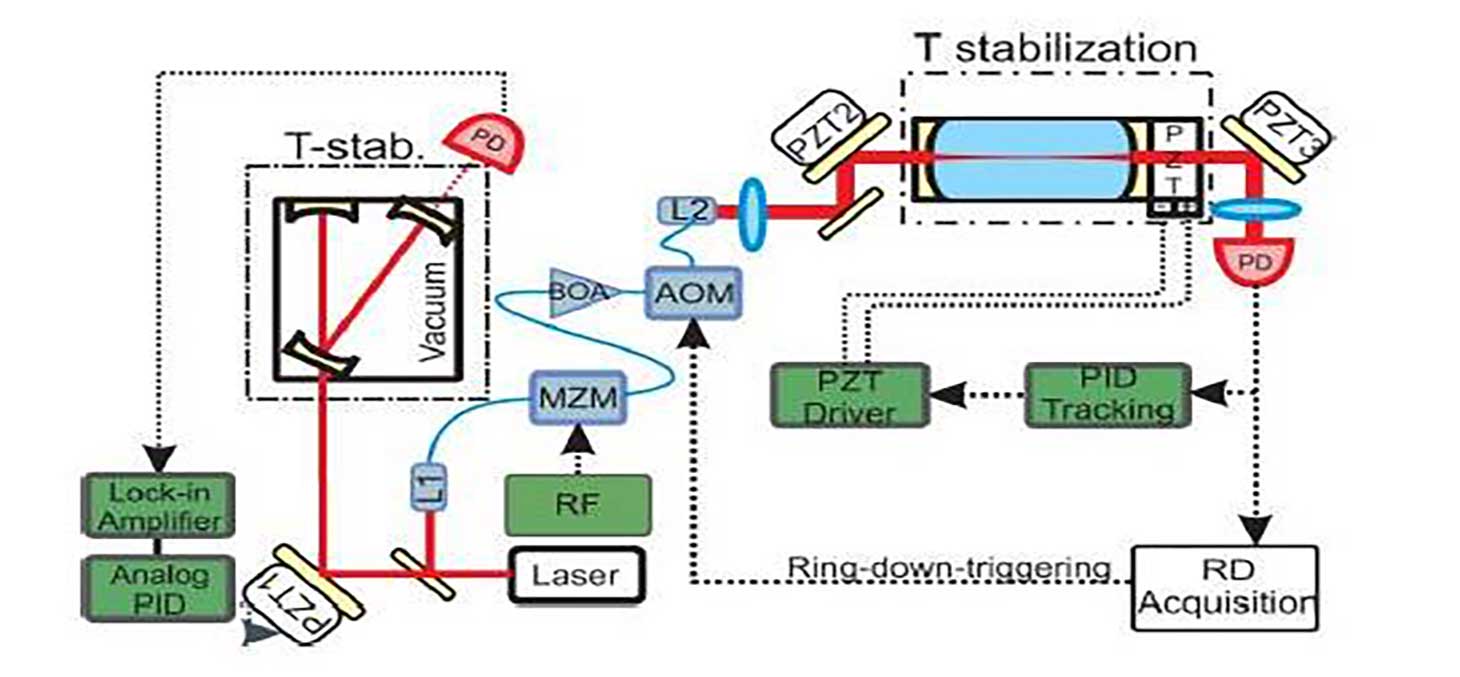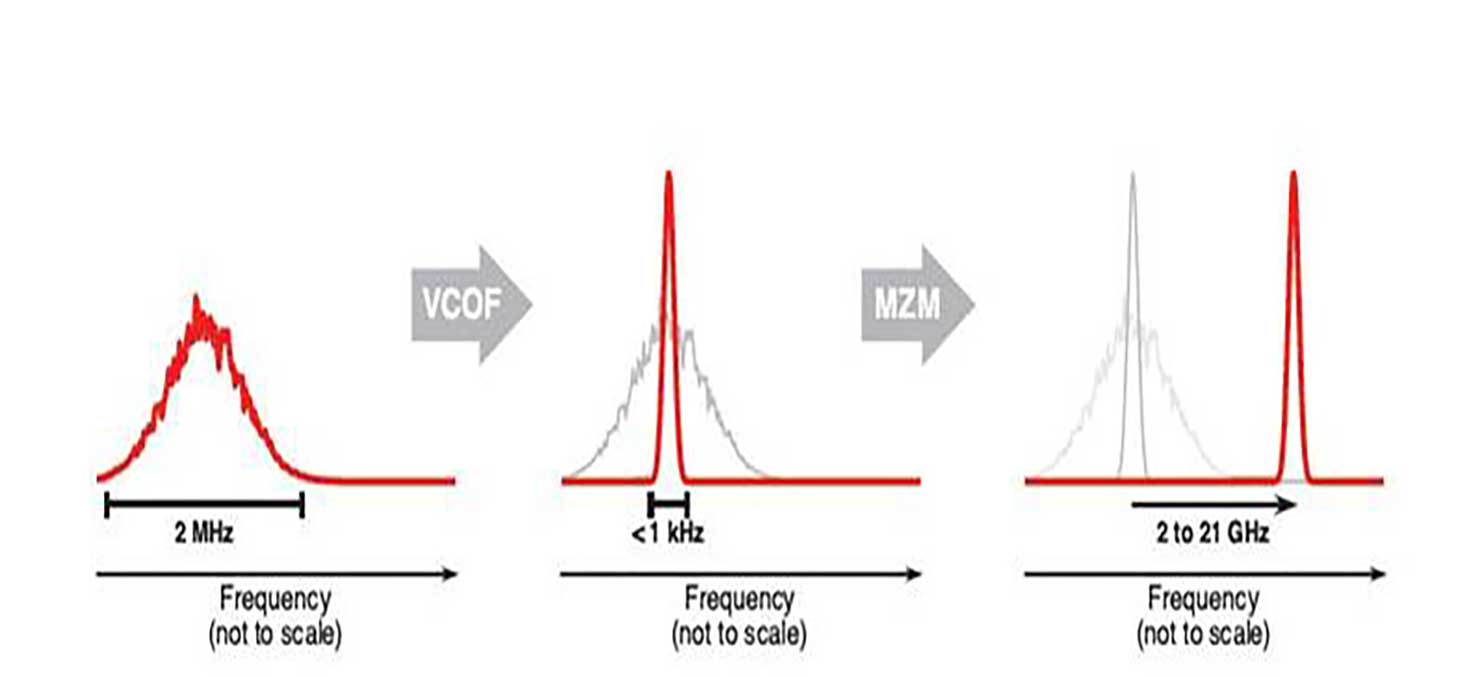- Share
- Share on Facebook
- Share on X
- Share on LinkedIn
The VCOF-CRDS (V-shaped Cavity Optical Feedback Cavity Ring-Down Spectroscopy) technique is based on the use of two separate optical cavities, one designed to stabilize the emission spectrum of a laser diode and the other containing the gas to be analyzed (Fig. 1).
The details of the method have already been published several times. We summarize the principle below. The stabilization of an infrared laser diode by coupling it to an ultra-stable V-shaped optical cavity of high finesse provides a light source with an ultra-fine spectrum (fig. 1). The wavelength of the light thus obtained can then be arbitrarily modulated in a continuous way thanks to an acousto-optical device developed at LIPhy (fig. 2). The wave is then injected into a second optical cavity containing the gas to be analyzed.

The optical absorption at this wavelength is then very precisely quantified by CRDS ("Cavity Ring-Down Spectroscopy"), i.e. by measuring the time constant of the decay of the photon flux leaving the cavity just after having interrupted the incoming flux. Depending on the isotopic tracer that we wish to measure, we determine the surface of several absorption peaks which each correspond to a different isotopologue (e.g. 626, 627 and 628 for Δ17O). To date, the accuracy of the VCOF-CRDS is much higher than that of the traditional CRDS. In particular, it allows to measure optical absorption with extremely low noise levels, which already redefine the state of the art of infrared molecular spectroscopy, and it offers a level of analytical precision largely sufficient for measurements of isotopic anomalies in CO2, H2S or water. This technique also has the advantage of a very high frequency stability inherited from the mechanical stability of the VCOF, with a drift lower than 10 Hz/s. Finally, the ability to arbitrarily modulate the frequency of the wave injected in the CRDS cavity containing the gas to be analyzed allows to measure almost simultaneously all the isotopic tracers of interest with a single instrument, without being hampered by the huge differences in abundance between isotopologues thanks to the choice of stronger or weaker absorption lines.

Actors
Samir KASSI
Erik KERSTEL
Daniele ROMANINI
- Share
- Share on Facebook
- Share on X
- Share on LinkedIn